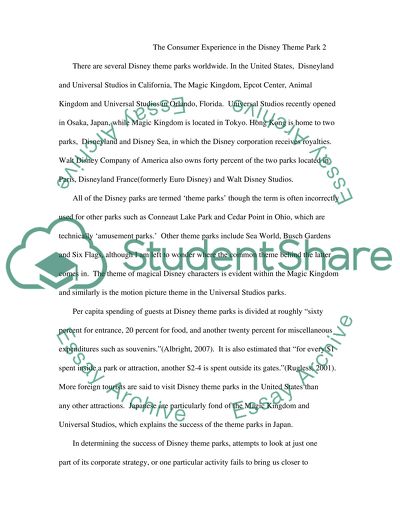Cite this document
(“The Consumer Experience in the Disney Theme Park: How Theme Park Essay”, n.d.)
The Consumer Experience in the Disney Theme Park: How Theme Park Essay. Retrieved from https://studentshare.org/tourism/1540778-the-consumer-experience-in-the-disney-theme-park-how-theme-park-design-and-layout-influence-consumer-behavior
The Consumer Experience in the Disney Theme Park: How Theme Park Essay. Retrieved from https://studentshare.org/tourism/1540778-the-consumer-experience-in-the-disney-theme-park-how-theme-park-design-and-layout-influence-consumer-behavior
(The Consumer Experience in the Disney Theme Park: How Theme Park Essay)
The Consumer Experience in the Disney Theme Park: How Theme Park Essay. https://studentshare.org/tourism/1540778-the-consumer-experience-in-the-disney-theme-park-how-theme-park-design-and-layout-influence-consumer-behavior.
The Consumer Experience in the Disney Theme Park: How Theme Park Essay. https://studentshare.org/tourism/1540778-the-consumer-experience-in-the-disney-theme-park-how-theme-park-design-and-layout-influence-consumer-behavior.
“The Consumer Experience in the Disney Theme Park: How Theme Park Essay”, n.d. https://studentshare.org/tourism/1540778-the-consumer-experience-in-the-disney-theme-park-how-theme-park-design-and-layout-influence-consumer-behavior.


